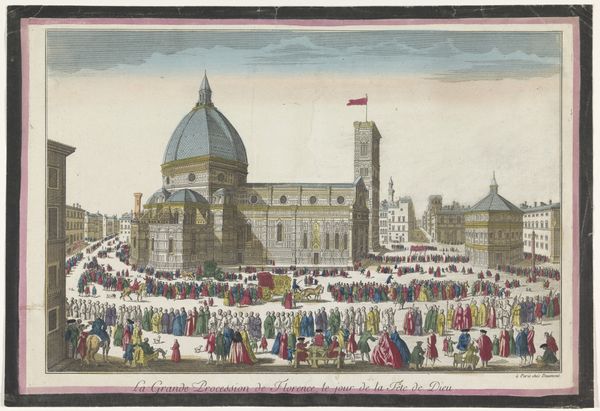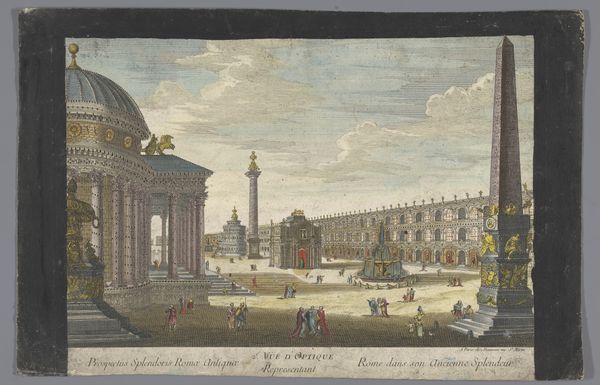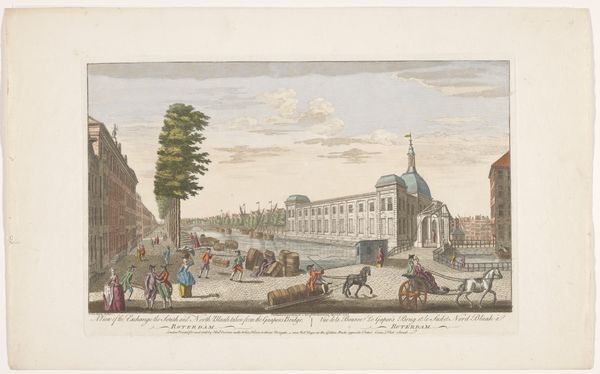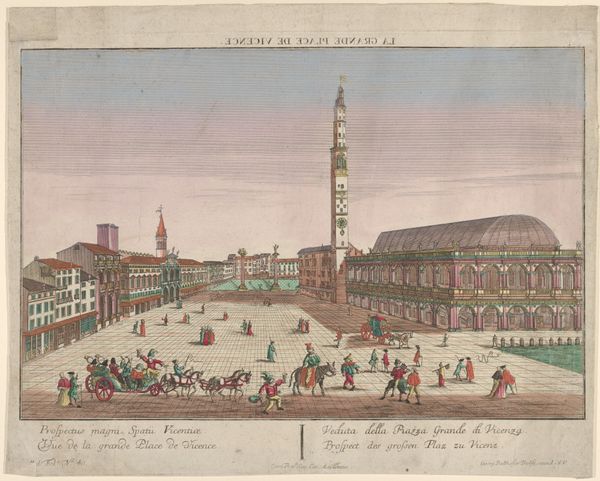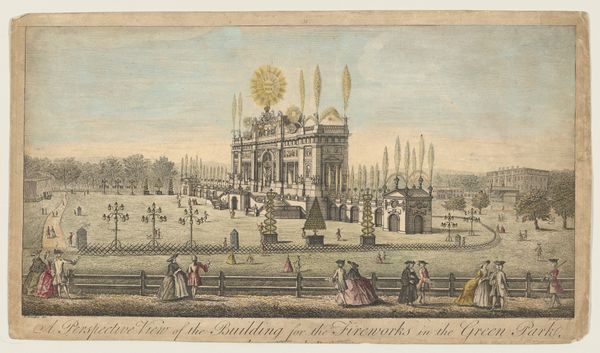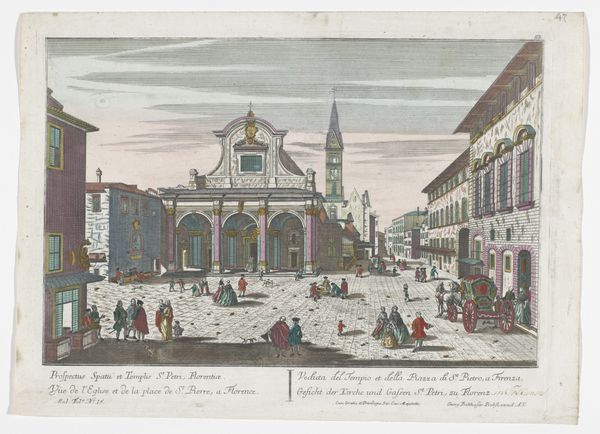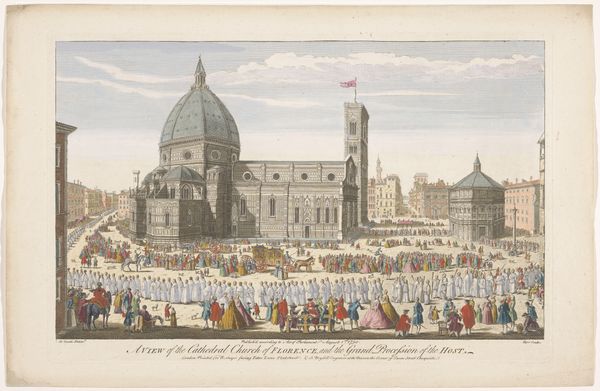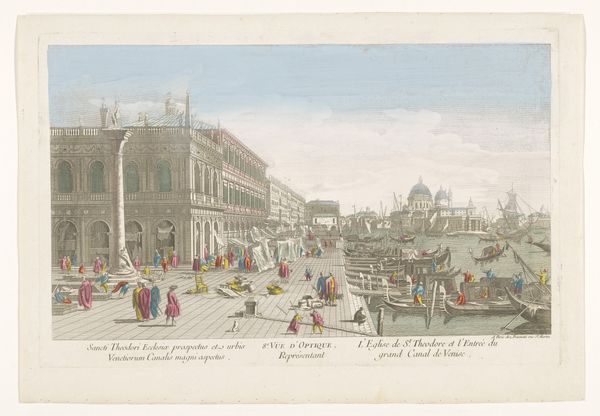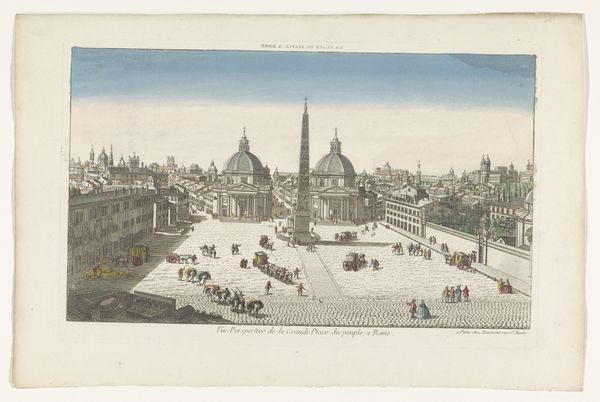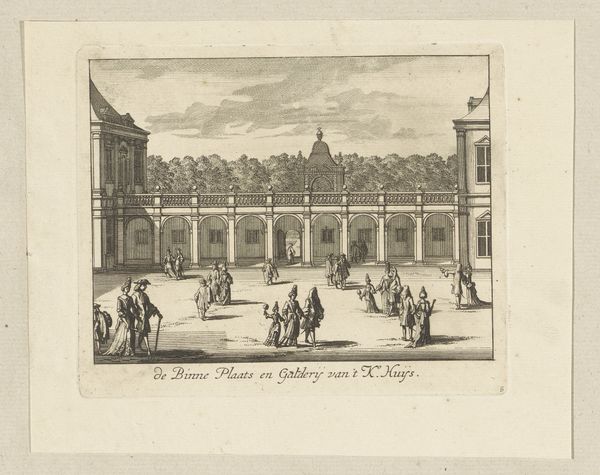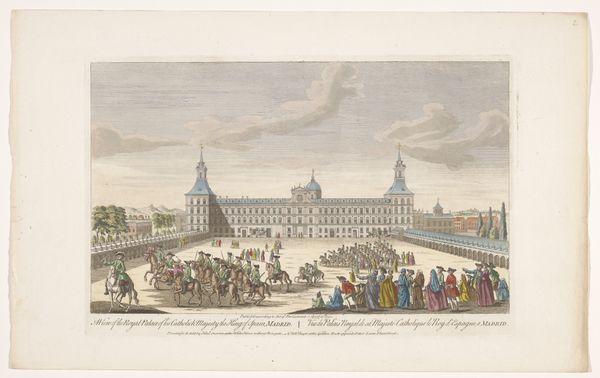
print, engraving
#
neoclacissism
# print
#
perspective
#
cityscape
#
history-painting
#
engraving
Dimensions: height 388 mm, width 427 mm
Copyright: Rijks Museum: Open Domain
Curator: Here we have Georg Balthasar Probst's "Gezicht op de Dom te Florence," which roughly translates to "View of the Cathedral in Florence." Created between 1742 and 1801, this work offers a detailed depiction of the city's iconic Duomo. Editor: My first impression is how orderly the city looks. And look at all the people in the plaza! They're all figures of leisure and luxury, walking with intent. What do we know about who would commission an artwork like this? Curator: As a Neoclassical print, the architectural detail would be extremely important. Probst uses precise lines in this engraving to highlight the Duomo's imposing facade and the clean lines of Brunelleschi’s dome. Editor: Yes, but what cultural significance would a meticulous engraving of the Duomo have? What narrative did its image promote at the time? This artwork, with its seemingly impartial and architectural focus, feels deliberate and purposeful, given its historical context. It seems that every stroke has political undertones. Curator: Perhaps the clean architectural lines represented the order they hoped for at that time. Florence, even then, held deep symbolism. You’re right; this wasn’t just any cityscape. I think the clothing represents a wealthy merchant society, focused more on class and status, even in the absence of monarchy. Editor: That is where symbols start. What better image to show power and wealth than the church and surrounding gentry, each informing the other. This image would play to a cultural memory of Renaissance grandeur while reflecting more contemporary issues of identity, commerce, and control. I imagine that, to people outside of Florence, that red flag is almost like claiming the city for themselves. Curator: Your reading connects so many relevant ideas and I see those same political, cultural, and even psychological themes emerge. These kinds of prints can act as cultural documents—the ways perspective and scale were manipulated to support the story of an industrious class. Editor: The detail here isn’t simply aesthetic; it’s a construction of identity and ambition, caught within an engraving.
Comments
No comments
Be the first to comment and join the conversation on the ultimate creative platform.
